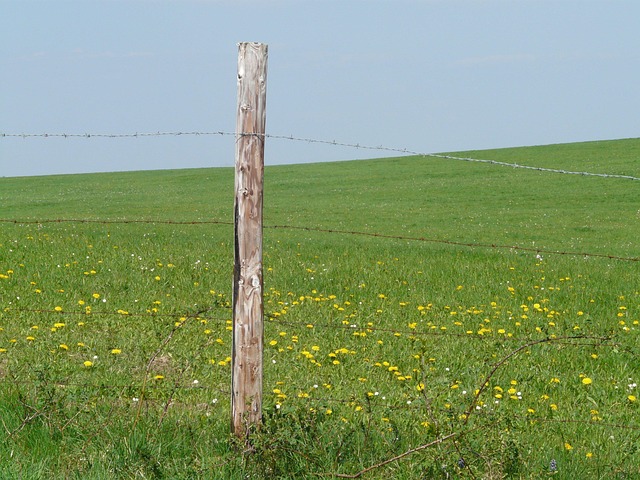Maintaining your privacy fence is essential for both aesthetic appeal and functional integrity. As a New Bedford homeowner, understanding local regulations regarding fence height and materials is crucial before embarking on any project. This article equips you with comprehensive maintenance tips to ensure your fence stands strong against the elements. From regular cleaning routines to seasonal checks and repairs, we guide you through every step, ensuring your privacy fence not only looks its best but also serves as a reliable barrier for years to come.
- Understanding Privacy Fence Requirements in New Bedford
- Regular Cleaning: Keeping Your Fence Sparkling
- Inspection: Identifying Potential Issues Early
- Repairs: When and How to Replace Damaged Parts
- Painting/Staining: Protecting Wood Fences
- Seasonal Maintenance for All Types of Fences
Understanding Privacy Fence Requirements in New Bedford
New Bedford homeowners looking to install or maintain privacy fences should familiarize themselves with local regulations. The city of New Bedford has specific guidelines regarding fence height, materials, and placement, designed to preserve the aesthetic and residential harmony of the neighborhood. Understanding these requirements is crucial before beginning any construction project. Homeowners must check with the local building department to ensure their desired fence design complies with the set standards.
These regulations often consider factors like property lines, street widths, and neighboring land uses. For instance, there might be restrictions on how tall a fence can be, especially near streets or common areas. Additionally, some materials may be preferred over others to maintain consistency with other homes in the area. Being proactive and informed about these privacy fence requirements will ensure a smooth installation process and help avoid any legal issues down the line.
Regular Cleaning: Keeping Your Fence Sparkling
Regular cleaning is an often-overlooked aspect of fence maintenance but it’s a crucial step in keeping your New Bedford property looking its best. Start by removing any debris, leaves, or twigs that have accumulated on top and at the base of the fence. Use a soft brush to scrub away any dirt or mold, taking care around gates and posts. A simple garden hose can help rinse away stubborn stains, but for more ingrained grime, consider using a mild detergent solution. Regular cleaning not only enhances the visual appeal of your fence but also helps prevent water damage and wood rot.
For wooden fences, a good cleaning is just the first step in maintaining their longevity. After cleaning, apply a fresh coat of sealant or paint to protect the wood from the elements. This barrier will help shield against UV rays, rain, snow, and extreme temperatures, ensuring your fence stays sturdy and attractive for years to come.
Inspection: Identifying Potential Issues Early
Regular inspections are key to maintaining your privacy fence’s health and longevity. Take time at least twice a year, ideally after winter and before summer, to thoroughly examine the fence for any signs of damage or wear. Walk along its length, checking for loose pickets, hinges, or brackets that may need tightening or replacing. Look for gaps, cracks, or warping in the wood, as these could indicate rot or insect infestation. Also, inspect the posts and foundations for stability; a wobbly fence is not only unsightly but can also pose a safety hazard. Early detection of such issues allows you to address them promptly, preventing minor problems from escalating into costly repairs.
Repairs: When and How to Replace Damaged Parts
Regularly inspect your privacy fence for any signs of damage, especially after harsh weather conditions or high winds. Common issues include broken or missing pickets, loose or rotten posts, and frayed or torn chains or cables. Promptly addressing these problems is essential to maintaining the overall integrity and aesthetic appeal of your fence.
When repairing or replacing damaged parts, ensure you have the right tools and materials. For small fixes like straightening loose pickets or tightening connections, a basic toolkit should suffice. However, for more significant structural repairs or replacements, consider consulting with a professional for guidance on the best approach and materials to use, especially if your fence is made from specific types of wood or metal.
Painting/Staining: Protecting Wood Fences
Regular painting or staining is essential to protect your wood fence from the elements, especially in New Bedford’s climate. Over time, sun exposure and moisture can lead to rot, warping, and discoloration, compromising the fence’s structural integrity. A fresh coat of paint or stain creates a protective barrier, shielding the wood from damage and prolonging its lifespan.
Choose a high-quality exterior paint or semi-transparent stain suitable for wooden fences. Ensure proper preparation by cleaning and repairing any damaged or rotten sections before application. Maintain a consistent routine, typically every 2-3 years, to keep your fence looking its best and ensure optimal protection against the changing seasons.
Seasonal Maintenance for All Types of Fences
Regular seasonal maintenance is key to keeping your new Bedford privacy fence in top condition year-round. In the spring, after winter’s chill subsides, inspect your fence for any signs of damage or wear. Repair or replace any broken pickets, rails, or posts promptly to maintain structural integrity and aesthetics. A light pressure wash can help remove accumulated dirt and debris, revitalizing the fence’s appearance.
During the summer months, continue regular cleaning and inspection routines. Keep an eye out for signs of rot or pest infestation, addressing these issues immediately with appropriate treatments. In preparation for autumn’s changing leaves and potential frosts, sweep and clear any debris from your fence to prevent water damage during heavy rains. A fresh coat of paint or sealant in late summer can offer added protection against the upcoming colder months.
